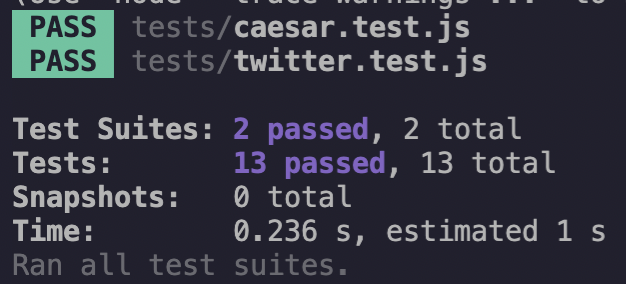Public Solving: Caesar decipher in JavaScript
permalinkSome kid elves are being naughty and sending themselves encrypted messages during elf class.
Santa has asked us to decrypt these messages to see what's happening.
The Caesar cipher is pretty easy to understand. It's basically the alphabet but offset with an x amount of characters.
For example:
abc
// shift 1
bcdAs you can see, we shift the letters up by the shift amount.
To decipher a message, we have to do the opposite.
Thinking about the solution permalink
At first, I started thinking about providing the alphabet as the shifted version and then mapping using that. But then I realized using the charCode might actually be a more straightforward solution.
We used the charCode for hacking Santa's password. ]
However, we should only match on a-z and A-Z. Capital and lowercase use a different charCode offset, so it's vital to distinguish between them.
Probably something that a regex and the replace function can help us with!
Building a Caesar decipher in JavaScript permalink
As mentioned, we need to only replace a-z and A-Z, meaning all characters like ,.! etc. should remain.
For this, we can use a regex and call another actual shift function for each of the two matches.
return text
.replace(/[a-z]/g, (char) => letterShift(char, shift, 97))
.replace(/[A-Z]/g, (char) => letterShift(char, shift, 65));As you can see, the starting offset for a lowercase letter is 97, and for uppercase, it's 65.
This means the character code for a is 97. And for A it's 65.
Now let's move on to making the actual letterShift function we declared.
const letterShift = (letter, shift, offset) => { }I'll break down each step of the following function and end with the complete function ready for use.
Let's take aol as our message. We know the offset here is 7.
The first thing we need to do is retrieve the char code of the letter we received.
letter.charCodeAt()
// a = 97
// o = 111
// l = 108The next step is to offset this character code with the shift. In our case, the shift is 7, so we have to detract 7 from our character code.
letter.charCodeAt() + shift
// a = 90
// o = 104
// l = 101For those paying attention, you might have spotted an issue here.
90 is not a valid letter since it should be more than 97. The ol is correct already.
To solve this, we need to add 26 to negative numbers. This means any number negative should be at the end of the alphabet.
letter.charCodeAt() + shift + 26
// a = 116
// o = 130
// l = 127Now the a is fine, but the ol are wrong as they should not have been plussed.
To make a rock-solid solution, we can do the following:
- letter char code
- minus the offset (97 for lowercase or 65 for uppercase)
- add the shift (-7 in our example)
- plus the alphabet length (+26)
- get the remainder of 26 (% 26)
- and then re-add the offset again
This way, we adhere to negative numbers as well as positive ones.
Making the complete function look like this:
return String.fromCharCode(
((letter.charCodeAt() - offset + shift + 26) % 26) + offset
);
// a = 116 = t
// o = 104 = h
// l = 101 = eNow let's run our test to see if this works for all the test cases.

We did it!
Would really love to hear what your solution would be to this puzzle. 👏
Thank you for reading, and let's connect! permalink
Thank you for reading my blog. Feel free to subscribe to my email newsletter and connect on Facebook or Twitter